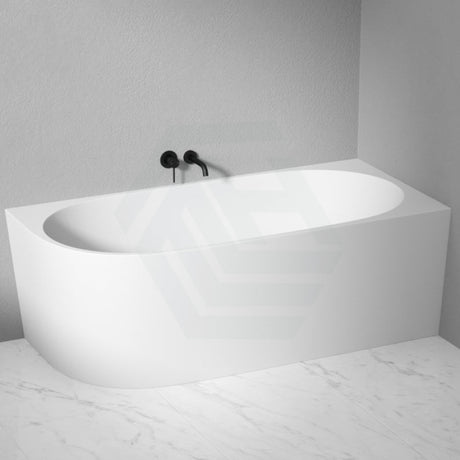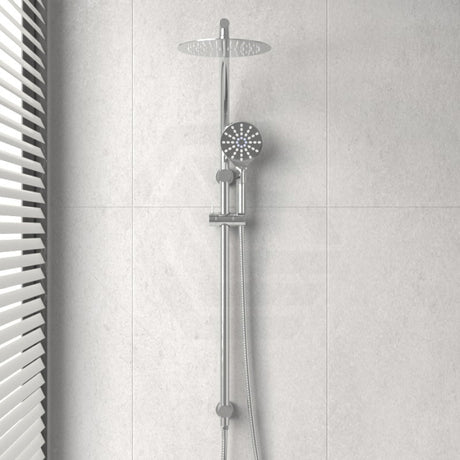28 October, 2025
Complete Shower Niche Design Guide: Size, Placement and Installation Tips
Master shower niche design for 2025 with our guide. Discover ideal sizes, placement tips, stylish options, and installation best practices to create a functional, organized bathroom.


If you want your shower to look nice and work well, adding a shower niche is a great idea. It’s a simple feature that gives you handy space for shampoo, soap, and other shower items, while also making the area look cleaner and more organised. In this guide, we’ll share how to design, size, and place a shower niche to make your shower both practical and stylish. Let’s get started.

What Is a Shower Niche?
A shower niche is a small recessed space built into your shower wall, made to hold items like shampoo, conditioner, and body wash. Unlike regular shelves or corner racks, a niche doesn’t take up extra room, keeping your shower tidy and easy to use. A niche also adds a nice design touch. You can match it with your wall tiles for a smooth, clean look or choose different colours and materials to make it stand out. And because it’s part of the wall, there’s no metal to rust, so it stays looking good for years.
Shower Niche Sizes: How Big and How High Should It Be?
Standard shower niche sizes usually follow the space between wall studs and the size of common bathroom items.
- Width: Around 30 cm is the most common. It fits between most wall studs and is wide enough to hold a few bottles.
- Height: The shower niche height is at least 30 cm, but you can make it taller if you need more space.
- Depth: About 8 cm works well. It’s deep enough for most products but still easy to reach.
- Placement Height: The bottom of the niche is usually 100–120 cm (40–48 inches) from the floor or the edge of the tub. You can change this based on your height and what feels most comfortable.
Types & Styles of Shower Niches
Shower niches come in a variety of types and styles, so you can pick one that fits your needs and matches your bathroom's look. Here are some of the most common options to consider.
-
Single-level Niches
Single-level niches are the most common basic configuration, providing a horizontal storage platform. This design is simple and efficient, suitable for storing everyday essentials like shampoo, conditioner, and body wash. -
Multi-level Niches
Multi-level niches offer two or more shelves, accommodating more items. The top shelf can hold less frequently used items, the middle shelf for daily essentials, and the bottom shelf for soap or razors. -
Horizontal Niches
Horizontal niches extend along the wall, typically only 10-15cm in height but can be 60-120cm in length. They provide ample storage space while maintaining a low-profile appearance. Items can be arranged horizontally for easy viewing and access. -
Vertical Niches
A vertical shower niche goes from low on the wall up to a higher spot. The height of a shower niche like this gives you more space to keep your things in order. It’s like tall shelves built into the wall. You can store foot scrubs and razors at the bottom and extra bottles or towels near the top. -
Double or Multiple Niches
Having more than one niche is great for bathrooms that more people share. Everyone can keep their own things in one spot, so the shower stays tidy. You can mix big and small ones to make it look a bit special. Use the same tiles or colors that go well together, and they’ll fit right in with the rest of the shower. -
Hidden Niches
Hidden niches are good if you like a simple, clean look. They’re built into a wall you can’t see when you walk in, so the shower looks smooth and open. You still get space to keep your stuff, but it doesn’t mess up the neat look.

Where to Place Shower Niche?
The spot you choose for your shower niche matters as much as how it looks. A good spot keeps everything close by and still makes your shower look neat and stylish.
- Easy to Reach: The best place for most people is around chest or eye level — about 90 to 120 cm from the floor. This height makes it easy to grab your shampoo or soap without bending too much.
- Between Wall Studs: Niches are usually built between wall studs, so it’s smart to plan during building or remodeling. This way, the niche fits nicely and doesn’t mess with the wall’s strength or waterproofing.
- Away from the Water: Try not to place your niche on a wall that is directly hit by the showerhead. Keeping it out of water helps stop splashing, puddles, and mold.
- On a Side or Hidden Wall: If you like a clean, simple look, place the niche on a side wall that you can’t see from outside the shower. It keeps the main wall smooth and uncluttered while still giving you handy storage.
Best Practices for Installing a Shower Niche
Installing a shower niche takes planning and careful work to make sure it lasts and looks good.
- Plan Early: Add the niche to your bathroom plan from the start. This helps it fit neatly between wall studs, line up with the tiles, and stay sealed.
- Keep It Waterproof: Since the niche sits in a wet wall, make sure it’s well sealed. Use a good waterproof layer and close up all edges and corners to stop leaks and damage.
- Line It Up with Tiles: Match the niche with your tile layout for a clean look. Measure ahead so you can use full tiles around it and avoid uneven cuts.
- Slope the Shelf: Tilt the bottom of the niche just a little (about 1–2 degrees) so water runs off. It keeps bottles dry and helps stop mold.
- Match the Look: Use the same tiles as the shower wall or ones that go well with it. Matching grout helps the niche blend in, while a different color can make it stand out.
- Make It Easy to Reach: Place the niche at a height that feels comfortable for everyone. In shared showers, you can add two, one higher and one lower, for easy use.
- Get Help If Needed: If the work is tricky, hire a pro. A skilled installer can make sure the niche is sealed, sturdy, and looks neat.
Conclusion
A well-designed shower niche can make your bathroom both useful and stylish. With the right size, spot, and sealing, it turns into a built-in space that keeps your shower neat and adds a nice touch of design. Careful planning helps every detail, from height to tile lines, fit just right with your layout. For more ideas and quality bathroom products, visit MyHomeware, your go-to place for modern bathroom inspiration.













